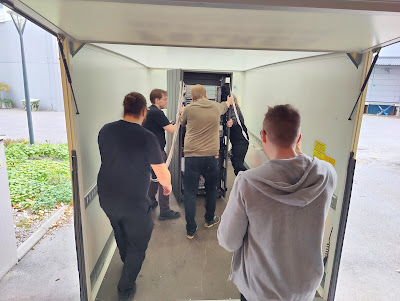Given that the last post on this blog was a bit more than 2 years ago it should not come as a surprise to anyone; I feel like I have sufficiently scratched the mainframe itch and have moved on to other projects.
I have spent the last few months getting all my mainframe equipment into the hands of the next-generation of hobbyists and since a week or so I am now officially sans mainframe. This also means it feels a bit silly to operate a blog or an internet persona around supposedly doing things with mainframes, when I do not own one or participate in projects around them.
Enjoy some parting images from the move.
I have been thinking about possible other names to rebrand my shenanigans but nothing concrete yet. The current blog will remain here hosted on Blogger.com, for how long I guess time will tell :-).
Thanks for reading and following along!



Comments
Post a Comment